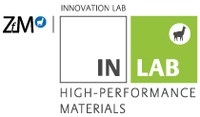Production, characterization and optimization of resistor meander structures as precision resistors
- Production, characterization and optimization of resistor meander structures as precision resistors
-

Partner: Isabellenhütte Heusler GmbH und Co. KG
Resistance alloys such as Manganin®, Zeranin® or ISAOhm® (registered trademarks) have been developed by the family-run company Isabellenhütte Heusler GmbH & Co. KG in Dillenburg since the beginning of the 20th century. These are copper / manganese or nickel / chromium-based alloys, which are refined in the fine composition with up to 4 secondary elements in order to achieve the desired physical properties. The alloys are particularly characterized by a very low temperature coefficient (TC) of the electrical resistance between +20 and 60 °C with a parabolic course of the R (T) curve, a high long-term stability of the electrical resistance, extremely low thermal force against copper and good processability. Because of these properties, the resistance alloys from Isabellenhütte are classic materials for manufacturing of standard, shunt and precision resistors.
Such resistors are used for precision measurements of electric currents, e.g., in the field of electromobility and energy supply and can be found, e.g., in the battery management system of automobiles. Typically the corresponding resistor devices are nowadays made of bulk material. In view of better integration and the opening up of new application possibilities, this sub-project aims to investigate to thin-film resistors of these materials and how reliably they can be produced on silicon substrates using thin-film and microstructuring methods.
The application temperature in air is limited by the onset of oxidation processes that can cause resistance drift. In this way, the long-term stability can be negatively affected and both the resistance value and the temperature coefficient of the electrical resistance can change slightly. This represents a major challenge for microstructures because, on the one hand, oxidation in the microstructuring process must be avoided and, on the other hand, microstructures per se have a larger surface-to-volume ratio than typical macroscopic volume materials.
In close cooperation between the two partners, both, the manufacturing process of thin films of the resistance alloys by means of ion-beam sputter deposition on silicon substrates and the microstructuring process of thin film resistors as meanders and / or similar geometries, are to be developed and validated.
More informations: mail to Prof. Peter J. Klar; mail to Sebastian L. Benz
- Index Innovationlab

